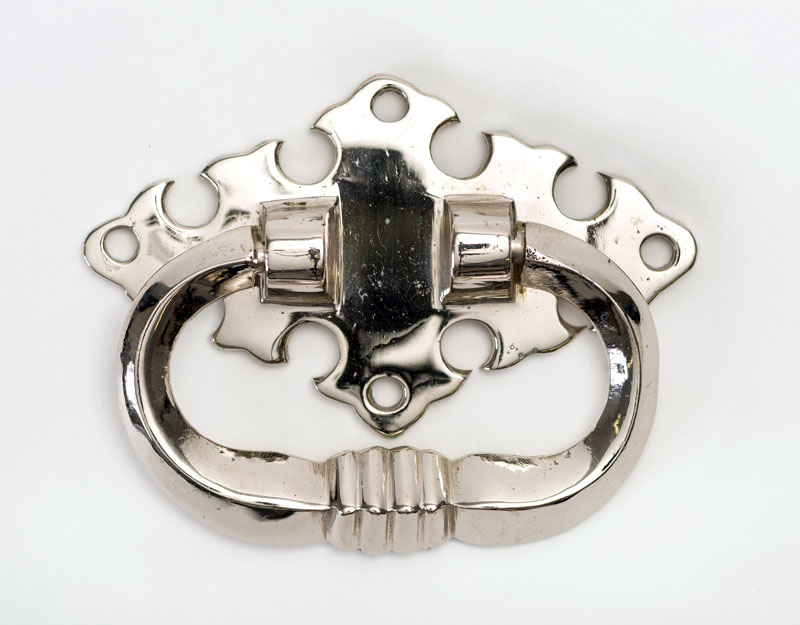
This is a top of the range burnished, nickel-plated, solid cast brass Princess Crescent handle. Its product number is N132, a variant of N126/T.E.Crescent in the 1960s’ Newman catalogue. It draws inspiration from earlier Victorian Neo-Gothic coffin handle designs.
Newman Brothers used sand casting to manufacture their products from 1894 till the mid 1960s when more efficient and accurate methods became available. As a result,
Newman Brothers commissioned die-casting companies to produce a range of their designs for them. One of those companies was GEO Gale (Die Casters) Ltd based on Birchfield Road in Birmingham.
In Victorian Birmingham, Child mortality rates were among the highest in the country. In Birmingham between the years 1873 and 1938 over 146,000 infants under the age of twelve months died. An average of 2,246 children every year, although most of these deaths occurred before the turn of the century prior to Joseph Chamberlain’s public health and sanitation acts. These acts improved life expectancy for children and adults alike.
Children’s coffin fittings were identical to those of adults only smaller. At the time these handles were produced children were dressed to look like ‘little adults’, even their shrouds were the same, but smaller. Find out more about shrouds here.
According to Victorian etiquette, the first year after the death of a child was a period of deep mourning. After this clothing material was changed, and traditional black crape was dispensed with although mourning continued for another year.
It was difficult for poorer members of society to embrace this etiquette, as they very often they could only wear what they already owned and couldn’t conform to these standards. As the likelihood of a child dying before the age of three was quite high parents would save for their children’s funerals ahead of time to ensure they could give a child a respectable funeral.
From the Victorian period up until the First World War Children’s coffins be between 2ft to 5ft in length (anything over 5ft was considered to be in the adult range). While adult coffins tended to have six handles, children’s coffins usually had four. Children’s coffins were not usually planed – the rough edges were covered in material instead. Soft English wood such as alder or aspen was a preferred coffin material. For a coffin between 2ft and 4ft the wood was around 9.5mm thick. For coffins larger than 4ft the wood needed to be 19mm thick.







